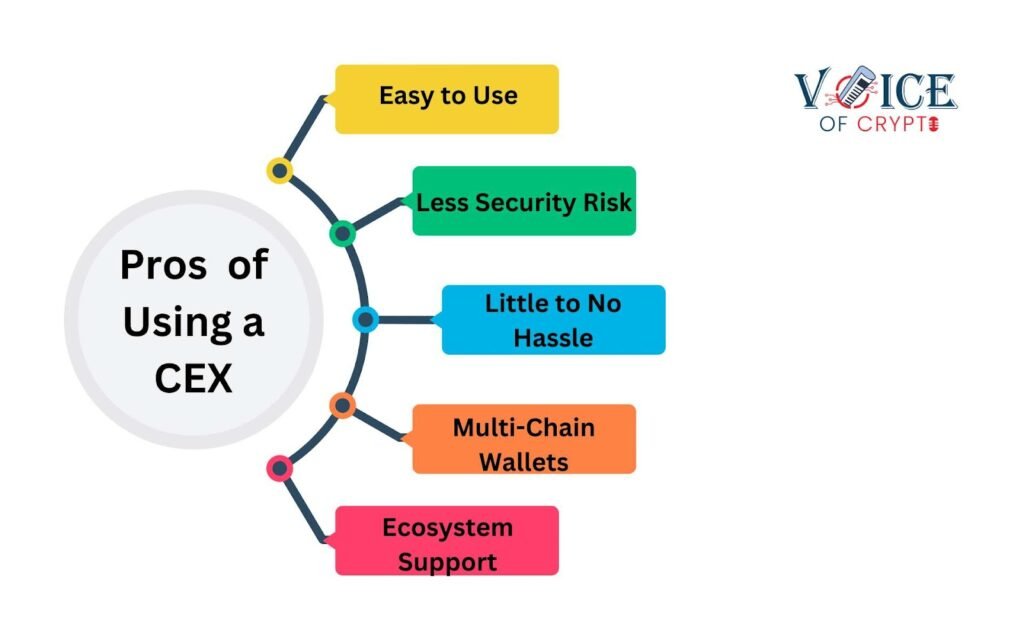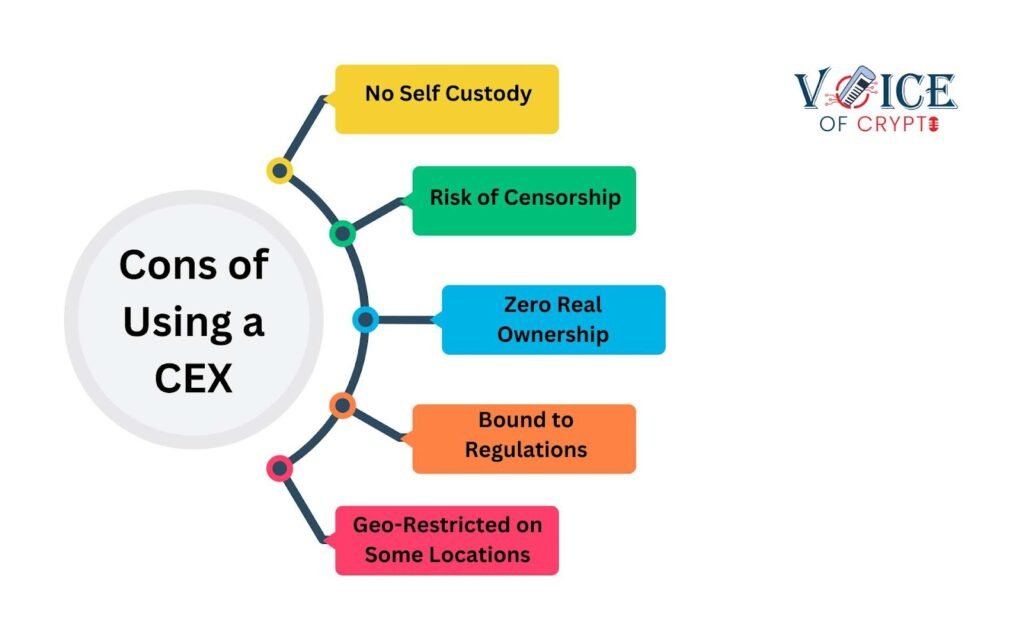
Centralized Exchanges are the ones where a single entity runs the entire exchange and is responsible for its maintenance, security, and upkeep. These exchanges are the largest ones in crypto as they offer all services in one place and do not have a steeper learning curve like their decentralized counterparts, making them perfect for beginners.
Here are a few takeaway points about centralized exchanges
- Centralized exchanges usually accept both crypto-to-crypto trades, as well as government-issued currency or fiat in some cases.
- It is easy to get confused by the word ‘centralized’ exchange. Since the main problem cryptocurrencies themselves aim to solve is that of centralized finance.
- Centralized exchanges are ‘centralized’ in that they stand as middlemen to help users conduct transactions.
- Without centralized exchanges, it is possible to lose hundreds of thousands of dollars when mistakes of one form or the other occur. Centralized exchanges reduce the likelihood of this happening.
- Centralized exchanges offer customer support, in case their customers need assistance.
- As a disadvantage, a centralized exchange answers to the government of the countries in which they operate. A centralized exchange has the power to freeze or take control of users’ assets.
Pros of Using a Centralized Exchange

CEXs often come with a lot of benefits and this is the reason why they are more successful than DEXs in terms of user activity.
The largest CEX, Binance has 250 million registered users while the largest Decentralized Exchange Uniswap has around 7.3 million users.
Easier to Use
All you need is an email address and a KYC verification to get started on any centralized exchange available at your location. You can deposit crypto from third-party sources or buy them with cash/card. Further, you can send and receive crypto from virtually anyone and from any chain if you are on these exchanges.
Less Security Risk
Centralized crypto exchanges are often secured with the highest grade of security making them one of the perfect choices for beginners and those who want to keep out of the hassle of securing Web3 wallets with different private and public keys.
Even if such exchanges get hacked, like what happened with Bybit, there is a much faster recovery process and the crypto ecosystem generally helps them recover. Also, several on-chain investigators also lend their help as recovery rewards are often huge in such cases.
Multi-Chain Wallets
All major crypto exchanges are equipped with a top-grade Web3 wallet. Though this wallet doesn’t let you take full control of your private keys, it allows you to receive crypto from any source. All you need to do is select the crypto you wish to receive and select the blockchain.
No Hassle of Securing Your Crypto
Unlike private self-custody wallets, the centralized exchanges offer full security of your funds providing a periodic Proof of Reserves that allows you to check if the exchange has enough funds to honor even a bank run.
Even in the worst possible cases like Mt Gox and FTX, almost all users received their compensation at least in dollar terms.
Cons of Using a Centralized Exchange
Every coin has a flipside, and so do centralized exchanges.

Regulatory Risks
Any centralized exchange can get regulatory action making it impossible for most users to access their funds. One such example was the ban on Binance.US which was imposed by the previous US Government.
In such scenarios, you get a very short window to withdraw your assets from the exchange.
Centralization Risk
Crypto exchanges work on a top-down approach where the top executives make all strategic and tactical decisions. Sometimes, this breeds centralization and forces exchanges to become unfriendly towards their customers.
One such example was in the case of FTX where the end users were left to suffer because top executives gambled all the crypto that belonged to their customers.
No Self-Custody
The most negative aspect of a centralized exchange is that it can freeze or seize your assets anytime. They might do so after a government intervention or on their own will. Whatever the case, it’s your crypto that ultimately suffers.




